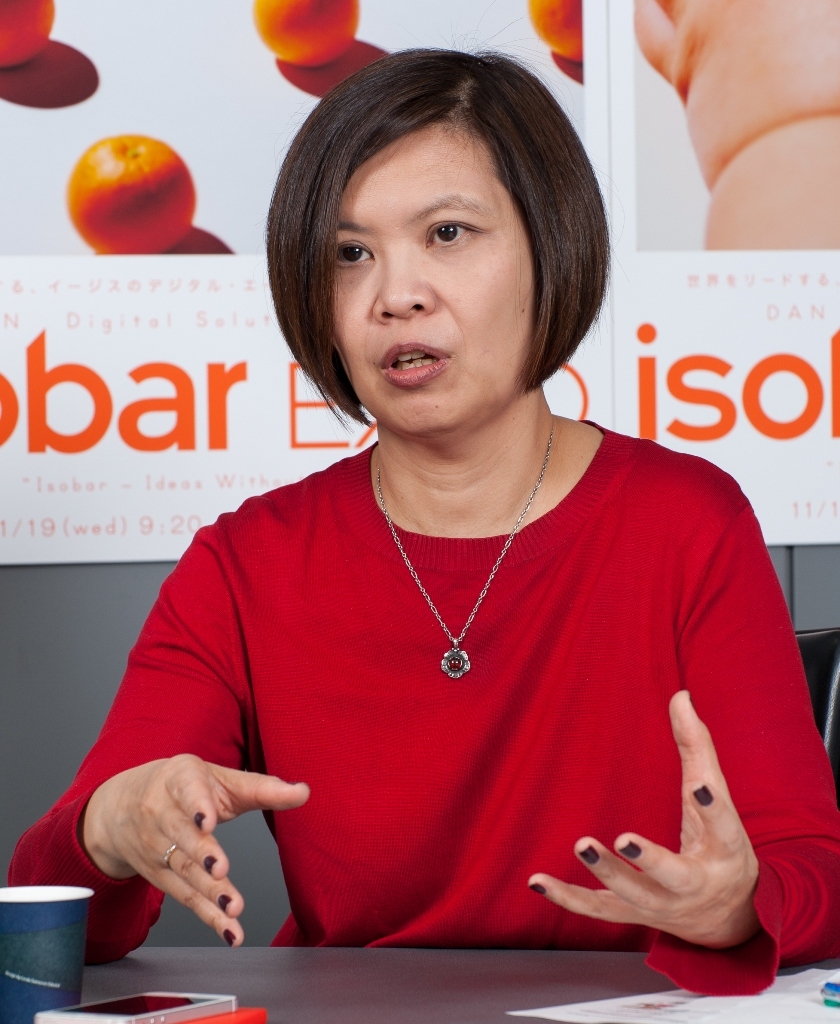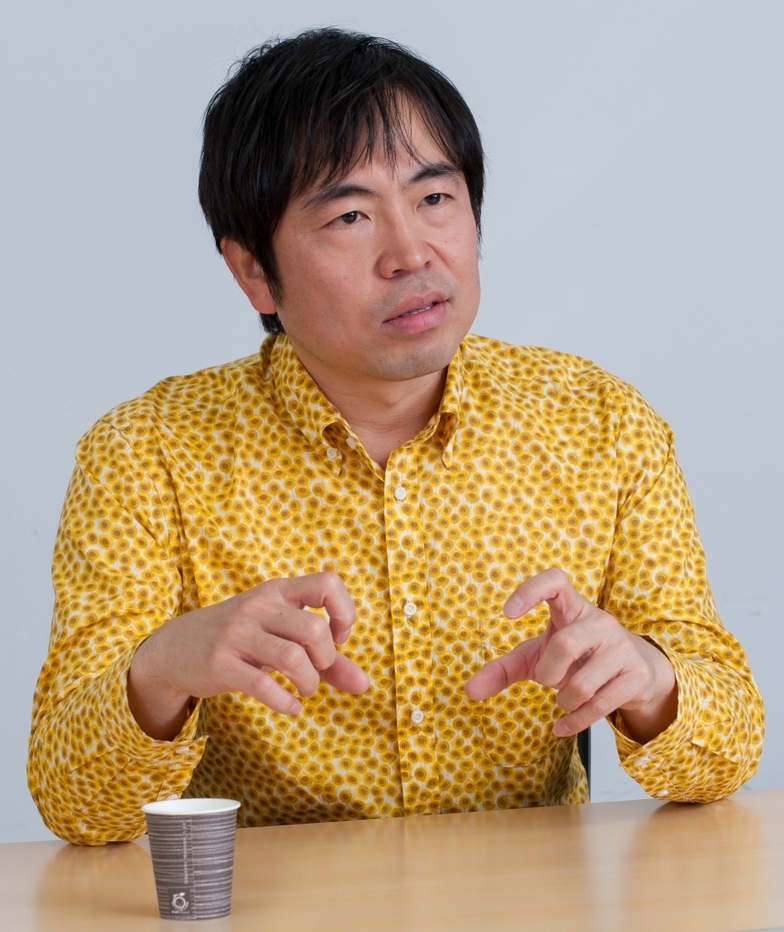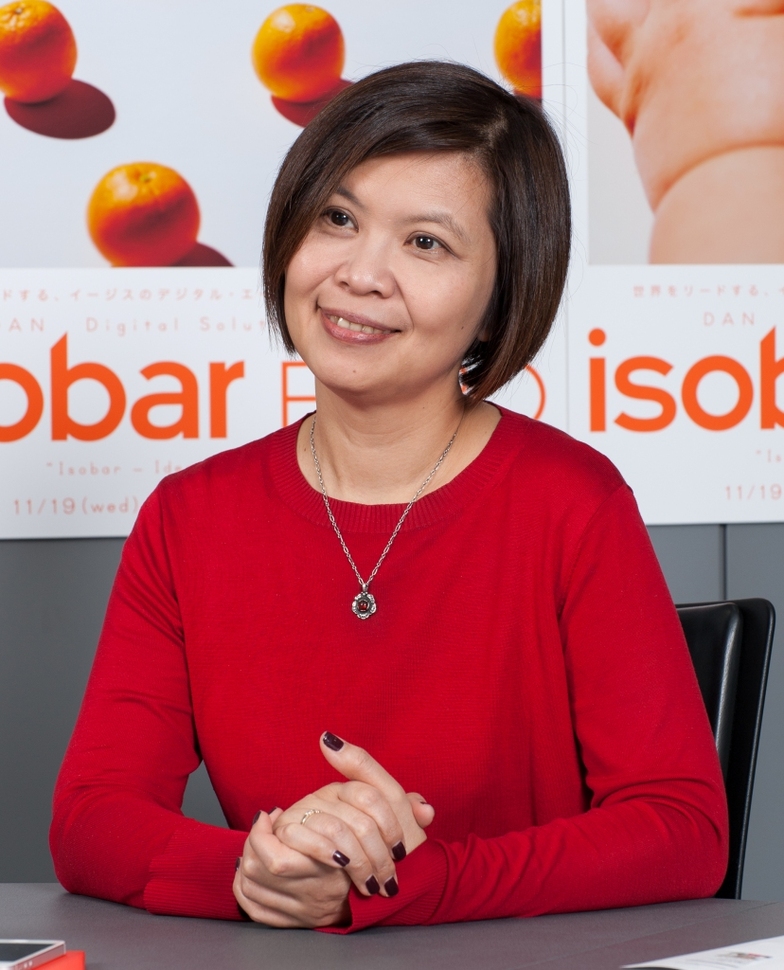Following the first part, Isobar Global CEO Gene Lin, who has played a pioneering role in the digital creative world, and Yasuharu Sasaki of Dentsu Inc. CDC discussed the essence of creativity in a "borderless era."
It is crucial for all employees to recognize their involvement in innovation
Sasaki: In Japan right now, attention is focused on new technologies like wearables and IoT (Internet of Things). What is your fundamental approach when engaging with the latest technologies?
Gene: We position the latest technologies as key elements in the services we provide. Our company-wide R&D organization, nowlab, also conducts multifaceted research and development. What we prioritize there is constantly asking ourselves, "How can we make users' lives simpler?" Even with convenient wearable technology, if consumers have to wear multiple separate devices, they'll likely think, "I don't need any more of this." Based on our experience and track record, we can confidently say that integrating technologies is the next major step.
Sasaki: "Making people's lives simpler" is a crucial keyword. I agree.
Gene: Making things simpler also connects to merging the virtual world with real life. I believe all technological innovations are heading in that direction.
Sasaki: I also hope technology isn't just about convenience, but about making people more active. While having a device that can do anything is great, a future created by technology that turns people into couch potatoes is definitely not a good one. I hope we can provide technology that enhances people's emotions – technology that makes them want to be more active and talk to others more.
Gene: That reminds me of a project from our Brazil office. In Brazil, summer means everyone spends time at the beach, leading to excessive UV exposure and a significant skin cancer risk. To help children understand this, we developed a small wearable device that clips onto clothing. Connected to a mobile app, it lets parents monitor how much UV exposure their children get during the day. Such devices aren't just convenient; they help encourage more active lifestyles.
Sasaki: That's a wonderful project. How do you typically communicate to your tech team the need to focus not just on technology, but also on human life, devising simple, human-centered solutions?
Gene: At nowlab, we always tell our team they're free to experiment with small projects. However, there's a fundamental framework we require as a core principle. We view the world through five Cs: first and foremost is the Consumer. Then comes Content, Community, Connection, and Commerce. This framework is essential, especially when formulating strategic plans. When a tech person comes up with an idea, they must consider how it solves problems and what opportunities it creates. For a small experimental plan to become an actual solution, it must answer these various questions.
Sasaki: At the recent Isobar Expo, you spoke about using innovation to deliver solutions to clients. Could you elaborate a bit more?
Gene: What we've learned from experience is that you don't need a dedicated innovation team. What matters most is that every employee feels involved in innovation. Otherwise, people just agree with the innovation team, others stop evolving, and you can't make new proposals to clients. That's why Isobar's nowlab isn't a fixed team. Anyone can participate in nowlab projects. Even if an idea is too early for a client to adopt, it might become a prototype and find a chance to be implemented in other markets. The key is that innovation is part of the company's culture and a process.
Sasaki: We're also creating a new lab called Dentsu Lab Tokyo, but we don't have a dedicated team solely focused on innovation either. Anyone with an idea can join the lab. Whether they're from the media division or sales, if their new idea is evaluated as something that can be applied as new business for clients, they can become lab members and work on it together.
Gene: That sounds very similar to our company. Even the Innovation Leaders at each Isobar location aren't primarily technologists. They include creators, user experience specialists, and data experts. When experimenting with innovation, the focus is on who can create the most compelling and engaging experiences.
Being on the same level is the best way to collaborate.
Sasaki: Dentsu Inc. has many new technologies like "necomimi" and "draffic." To sell such technologies and ideas, I believe we need a story and value proposition that connects innovation to solutions. How do you see it, Gene?
Gene: Before talking about innovation, shouldn't we first discuss innovative solutions to problems? Success stories about realizing innovative solutions often emerge from collaborations with clients we've worked with for many years. It's precisely because of that trust and long-standing partnership that clients can more easily understand even highly original solutions. Conversely, without that foundation, they might fear the risk. In that sense, considering Dentsu Inc.'s influence in Japan and the many client relationships built over the long term, I think we're in an ideal environment right now to sell innovation.
Sasaki: You're right, Dentsu Inc. has built strong relationships with its clients. If we combine that bond with Isobar's capabilities and innovative strength, we could deliver powerful solutions that go beyond advertising. But what would be the best form of collaboration between Dentsu Inc. and Isobar?
Gene: The key point is for Dentsu Inc. to view Isobar not as a separate unit with different capabilities, but as an integral part of the company. This is because Isobar also needs to work hand-in-hand with Dentsu Inc., operating from the same position, to drive client solutions forward. This approach makes things clearer for clients and allows us to take responsibility for solution delivery. It also enables us to channel more positive energy into the process of driving change.
Sasaki: I agree. To kickstart that process, I think it's crucial to further strengthen the digital capabilities of the sales teams building these partnerships. Many sales representatives participated in Isobar Expo, and I imagine they gained significant insights from this experience.
By the way, many young people today, whether in sales or creative roles, likely aspire to work globally. What do you think is needed for Japanese professionals to look beyond Japan and take the leap overseas?
Gene: I think the current initiative where employees of Dentsu Inc. are stationed at our company for several months to learn is going well. Every Dentsu Inc. person I've met has a very strong desire to learn. That's a key part of Dentsu Inc. culture, isn't it? When you go overseas, you naturally want to understand the country you're in, so you absorb everything and learn more effectively. It's the same at Isobar. Recent surveys show that 50% of Isobar staff want global assignments.
Language is also crucial. Europeans aren't native English speakers, yet they aren't afraid to speak it. Japanese people are good at reading and writing English, but work demands more speaking. Having the courage to express yourself is vital.
Sasaki: Japanese people tend to be shy and worry about not speaking English as fluently as a native speaker, but that level isn't necessary, right?
Jean: Nobody expects that. Everyone knows you're not a native speaker, so just try speaking. I think many of my Japanese friends have a high level of English. All that's left is to take action.
Sasaki: That was very valuable advice. Thank you.








